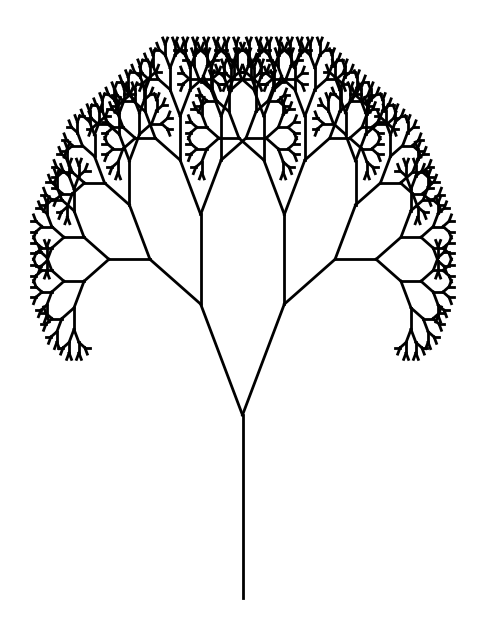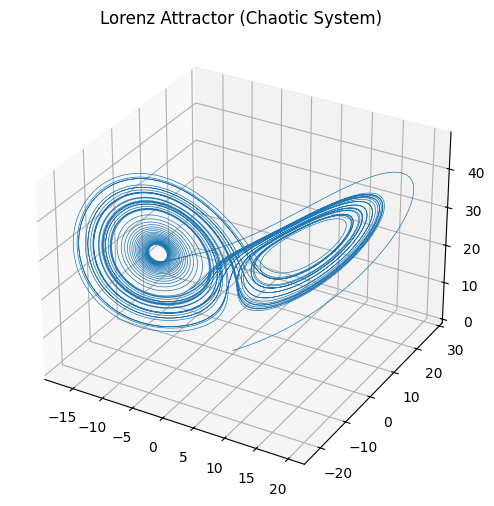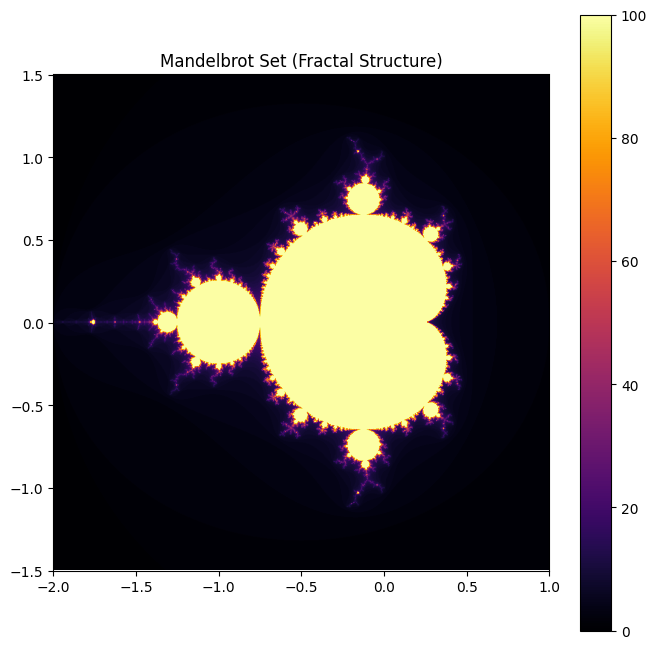Apollo & Dionysus#
The Make America Great Again (MAGA) movement, stripped down to its raw textual essence, leans heavily on an unstated assumption: progress is a straight line, a ladder you can climb up or down. The nostalgic yearning baked into its slogan suggests that by retracing our steps—returning to some golden era of “old values”—America can reclaim its greatness, like rewinding a VHS tape to the good part. On X, you see this sentiment pulse through posts lamenting the loss of a simpler, stronger past, as if history were a highway with a clear exit ramp to 1950s diners or 1776 grit. But this view misunderstands how greatness—or anything worthwhile—actually emerges. America’s past triumphs weren’t the result of a tidy, predictable march forward; they were messy, branching phenomena, like a tree sprawling outward, its buds and fruit unpredictable until they bloom. You can’t just snip a branch, replant it, and expect the same apple.
History is a fractal unfolding of entropy and order, a ceaseless churn wherein civilizations rise on the back of extracted resources, only to collapse under the weight of their own complexity
Think of history as a maze, not a line. To reach a prize—say, the industrial might of the 20th century or the revolutionary spark of the Founding Fathers—you stumble through countless false starts and dead ends. The Constitution wasn’t a foregone conclusion; it was a fluke born from squabbling delegates, economic pressures, and a dash of Enlightenment luck. The economic boom after World War II? Less a master plan than a convergence of global devastation, resource abundance, and sheer human hustle. These weren’t rungs on a ladder you can climb back to—they were singular moments, emergent from a fractal dance of order and entropy. History isn’t a blueprint you can Xerox; it’s a labyrinth where every turn changes the map. This fractal nature reveals a deeper truth MAGA misses: what we call progress is just the arrow of time sketching patterns that repeat at different scales. Civilizations rise on the back of concentrated energy—be it coal, oil, or sheer human will—only to buckle under their own complexity. Rome didn’t fall because it forgot its values; it unraveled as its sprawling systems outstripped their energetic base, dissolving into a diffusion that fertilized the next cycle. The second law of thermodynamics plays out in slow motion: empires peak, then fray. X users might romanticize America’s industrial heyday, but they forget the coal mines, the wars, the ecological drawdowns that fueled it—costs you can’t just wish away by turning back the clock.
Yet entropy isn’t the villain here—it’s the soil for renewal. The collapse of one order seeds the next, chaotic but fertile. MAGA’s nostalgia assumes greatness is a static thing you can freeze in amber, but America’s real genius has always been its ability to stumble, adapt, and sprout anew from the wreckage. Going “back” to old values won’t summon the past’s fruits because those fruits were never guaranteed—they were chance blooms off a wild, twisting branch. The maze doesn’t have a reverse gear; it just keeps unfolding. So maybe the epilogue isn’t a return but a reckoning: greatness isn’t behind us or ahead in some straight shot—it’s in the churn, the fractal mess we’re still navigating, blind but alive.
This is the forgotten rhythm of history—a pulse, not a line. And yet, MAGA marches to a fantasy drumbeat, nostalgic for a past that never was and blind to the laws that govern all systems, from stars to states. Its red-capped dream hinges on the illusion that greatness is a waypoint on a road you can simply U-turn toward, as though the 1950s were just an offramp missed by mistake.
But history doesn’t work like that. It doesn’t “remember.” It doesn’t “return.” It sprawls. It unfolds. It burns its own maps. The slogan “Make America Great Again” isn’t just naïve—it’s thermodynamically illiterate.
Greatness, when it emerges, is an anomaly: a spike in order atop a mountain of energy. Coal. Oil. War. Exploitation. Suffering. Infrastructure born of blood and steel. Every “golden age” is paid for in currency the past never lists on its postcards. The diner booths, the clean-cut suburbs, the national confidence—all of it floated on an invisible reservoir of planetary extraction and geopolitical dominance. The fantasy of a pure, ordered past is just that: a fantasy. Behind every Mayberry lies a mine.
History. It’s a fractal unfolding of entropy and order, a ceaseless churn wherein civilizations rise on the back of extracted resources, only to collapse under the weight of their own complexity
— Yours Truly
The MAGA worldview wants the fruit without the soil, the crown without the roots. But history, like any living system, is a fractal: it doesn’t move backward or forward—it spirals, it branches, it repeats motifs at different scales. Collapse is not an exception; it’s a phase. The Founding Fathers didn’t “plan” freedom like a spreadsheet—they hacked it together through chaos, compromise, and contingency. The post-war boom wasn’t destiny—it was the afterglow of global catastrophe.
Rome didn’t fall because it got soft; it collapsed because its complexity became unsustainable relative to its energetic input. That’s not a moral failing—it’s physics. And America isn’t immune. The more tightly we cling to an imagined golden past, the more brittle we become. Nostalgia, weaponized, calcifies into delusion.
What MAGA fails to grasp is that entropy isn’t just decay—it’s transformation. The heat death of an empire is the compost of something new. But that new thing can’t grow in a culture that refuses to admit the old one is rotting.
So here’s the truth, unvarnished: we are in the churn. The order you remember was built atop resource peaks that are now behind us. You cannot rewind time without rewinding the thermodynamics that made it possible. And no slogan, no strongman, no sepia-toned memory will summon the ghosts of gasoline-soaked prosperity.
But this isn’t a death sentence. It’s a call. Not to “go back,” but to go deeper. To understand that complexity collapses, yes—but it also regenerates. That entropy clears the field for renewal. That greatness isn’t something you preserve in a jar—it’s something you coax from the wreckage, again and again, at great cost.
The tree does not grow backward. The fruit does not ripen twice. The illusion of progress as a straight line is just that—illusion. But in the fractal mess of history, amidst the churn of chaos and the whisper of collapse, something wild and new is always trying to bloom.
Show code cell source
import matplotlib.pyplot as plt
import numpy as np
def draw_branch(x, y, angle, depth, length, ax):
if depth == 0:
return
x_end = x + length * np.cos(angle)
y_end = y + length * np.sin(angle)
ax.plot([x, x_end], [y, y_end], 'k-', lw=2)
new_length = length * 0.7
draw_branch(x_end, y_end, angle - np.pi/6, depth - 1, new_length, ax)
draw_branch(x_end, y_end, angle + np.pi/6, depth - 1, new_length, ax)
fig, ax = plt.subplots(figsize=(6, 8))
ax.set_xticks([])
ax.set_yticks([])
ax.set_frame_on(False)
draw_branch(0, -1, np.pi/2, 10, 1, ax)
plt.show()


Fig. 10 Strange Attractor (Chaotic System). This code simulates a simple chaotic attractor using the Lorenz system.#
The Fractal Foliage of Time: History’s Arboreal Unfolding History flows not as a river but grows as a tree, its roots anchored deep in the soil of human experience, its branches reaching outward through time in patterns that repeat yet never quite duplicate. We often conceptualize progress as linear—a straight path from primitive past to enlightened future—but this simplification betrays the complex reality of civilizational development. Like a tree’s growth, history proceeds through cycles of expansion and contraction, flourishing and withering, yet maintains patterns recognizable across scales and eras.
The roots of civilization draw sustenance from the fertile ground of available resources and technologies. Ancient Mesopotamia thrived along river valleys where agricultural surplus first permitted specialization beyond mere subsistence. Rome expanded on the energetic surplus of grain and slave labor. The industrial revolution harnessed fossil fuels, creating unprecedented material abundance. Each civilization rises on an energetic foundation, drawing upward through its social trunk the resources that fuel its expansion. Yet this extraction inevitably reaches limits, as societies grow increasingly complex systems to manage diminishing returns.
As civilizations mature, they branch and fork in myriad directions—cultural, technological, philosophical. Each branch represents a trajectory of development, carrying forward the essential nature of the trunk while expressing unique adaptations to particular conditions. The Roman Empire’s eastern and western halves diverged dramatically in their longevity and cultural evolution despite sharing common origins. Similarly, the ideological branches of the Enlightenment sprouted both democratic and authoritarian offshoots. These branches do not progress in a single direction but rather explore possibility spaces, sometimes doubling back upon themselves or grafting onto other traditions.
The nostalgic impulse to “make things great again” fundamentally misunderstands this arboreal nature of history. It imagines we might simply retrace our steps along a linear path to return to some golden age. Yet we can no more return to the America of the 1950s than a mature oak can revert to its sapling form. That earlier time was itself a product of specific historical conditions—the post-war economic boom, technological innovations, demographic patterns, and geopolitical realities that cannot be reconstructed through political will alone. The past exists not behind us but within us, its patterns incorporated into our present structure.
When civilizations reach their limits of complexity and resource extraction, entropy begins its inexorable work. Institutions calcify, energy flows diminish, and social systems strain under their own weight. Yet this entropy represents not merely decay but transformation—the necessary decomposition that returns nutrients to the soil from which new growth will emerge. The fall of Rome scattered seeds of culture across Europe that would, in time, sprout new civilizational forms. The collapse of the Soviet Union released energies previously bound in rigid structures. Entropy serves as the forest fire that clears space for saplings to receive sunlight.
Show code cell source
from scipy.integrate import solve_ivp
import numpy as np
import matplotlib.pyplot as plt
def lorenz(t, state, sigma=10, beta=8/3, rho=28):
x, y, z = state
dxdt = sigma * (y - x)
dydt = x * (rho - z) - y
dzdt = x * y - beta * z
return [dxdt, dydt, dzdt]
t_span = (0, 50)
initial_state = [0.1, 0.0, 0.0]
t_eval = np.linspace(t_span[0], t_span[1], 10000)
sol = solve_ivp(lorenz, t_span, initial_state, t_eval=t_eval)
fig = plt.figure(figsize=(8, 6))
ax = fig.add_subplot(111, projection="3d")
ax.plot(sol.y[0], sol.y[1], sol.y[2], lw=0.5)
ax.set_title("Lorenz Attractor (Chaotic System)")
plt.show()


Fig. 11 Fractal Structure (Self-Similarity). A visualization of the famous Mandelbrot fractal, representing infinite complexity at all scales.#
The leaves at the extremities of history’s branches—our present moment—receive the accumulated wisdom flowing upward from roots through trunk through branch. Yet they also synthesize new energies through their interaction with the light of current circumstances. They are simultaneously the most vulnerable parts of the tree and the site of its most vital transformative work. Through photosynthesis—the conversion of raw information into usable cultural energy—they create the resources that will flow back downward to nourish the whole.
This fractal, arboreal understanding of history liberates us from both progressive utopianism and reactionary nostalgia. We need not imagine ourselves marching inexorably toward some predetermined future, nor can we retreat to an idealized past. Instead, we might recognize ourselves as participants in an ongoing process of growth and transformation, inheritors of patterns that have repeated throughout human experience yet faced with the responsibility to adapt those patterns to unprecedented conditions.
The history of civilization thus reveals itself not as a linear progression but as an organic unfolding, subject to the same principles that govern all complex systems. It demonstrates both tremendous resilience and inevitable transformation. Understanding this nature helps us navigate our present moment not by seeking to reverse time’s arrow but by cultivating the conditions for healthy growth from where we actually stand. The true lesson of history’s tree is that renewal comes not from returning to roots but from sending forth new branches, mindful of the patterns that have sustained life through countless seasons of change.
Show code cell source
import numpy as np
import matplotlib.pyplot as plt
def mandelbrot(c, max_iter=100):
z = c
for n in range(max_iter):
if abs(z) > 2:
return n
z = z*z + c
return max_iter
xmin, xmax, ymin, ymax = -2.0, 1.0, -1.5, 1.5
width, height = 1000, 1000
x = np.linspace(xmin, xmax, width)
y = np.linspace(ymin, ymax, height)
mandelbrot_set = np.zeros((width, height))
for i in range(width):
for j in range(height):
mandelbrot_set[i, j] = mandelbrot(complex(x[i], y[j]))
plt.figure(figsize=(8, 8))
plt.imshow(mandelbrot_set.T, extent=[xmin, xmax, ymin, ymax], cmap="inferno")
plt.title("Mandelbrot Set (Fractal Structure)")
plt.colorbar()
plt.show()


Fig. 12 Immitation. This is what distinguishes humans (really? self-similar is all fractal). We reproduce language, culture, music, behaviors, weapons of extraordinarily complex nature. A ritualization of these processes stablizes its elements and creates stability and uniformity, as well as opportunities for conflict and negotiation. These codes illustrate the key points made in Sapolsky’s discussion: the limits of reductionism, the role of chaos in biological systems, and the fundamental nature of self-similarity in complex structures.#
History is not a straight path but a fractal, a recursive pattern of entropy and order, growth and decay, where civilizations rise like leaves on a tree, only to fall and nourish the soil for the next cycle. The illusion of linear progress—the idea that time moves us ever forward toward some inevitable betterment—is a seductive narrative, but it obscures the deeper truth: history is a spiral, not an arrow. Empires, cities, and cultures emerge, structured around energetic peaks, drawing sustenance from the roots of extracted resources, only to collapse under the weight of their own complexity. This is not chaos but entropy, the necessary precondition for renewal. The second law of thermodynamics plays out in slow motion, as the energy that once fueled growth diffuses, and what was once a towering trunk becomes a branching network of possibilities, each fork a decision point, each branch a new iteration of an ancient motif.
The metaphor of the tree is apt: roots, trunk, fork, branches, leaves. It is not a linear process from the earth to the leaves but a dynamic, recursive one. The roots draw nutrients from the soil, the trunk rises as a central axis, and the branches fork endlessly, each decision point a moment of potential divergence. The leaves, though they seem like the endpoint, are merely the visible expression of a process that is cyclical, not linear. They fall, decompose, and return to the soil, feeding the roots once more. This is the fractal nature of history: the same patterns repeating at different scales, the same motifs inscribing themselves across time. The rise and fall of empires, the diffusion of cultures, the unraveling of complexity—these are not failures but necessary steps in the cycle of renewal.
The idea of linear progress is particularly seductive in moments of nostalgia, when the past is romanticized as a golden age to which we might return. Movements like MAGA (Make America Great Again) tap into this longing, suggesting that backtracking along the arrow of time can restore us to a simpler, more prosperous era. But this is a misunderstanding of history’s fractal nature. The past is not a fixed point to which we can return; it is a branching network of decisions, each fork a moment of divergence that cannot be undone. The nostalgia for a bygone era is not a return to the roots but an attempt to climb back up a branch that has already forked, to reoccupy a leaf that has already fallen. The energy that once sustained that moment has diffused, and the soil has shifted. To mistake entropy for chaos is to miss the point: entropy is the engine of renewal, the force that clears the ground for new growth.
History, then, is not a march forward but a spiral, a fractal unfolding of entropy and order. The rise and fall of civilizations, the diffusion of cultures, the unraveling of complexity—these are not signs of failure but of life. The tree does not mourn the loss of its leaves; it knows that they will nourish the soil for the next cycle. The second law of thermodynamics is not a sentence of decay but an invitation to witness the endless dance of creation and destruction, growth and renewal. To mistake entropy for chaos is to miss the beauty of the process, the fractal nature of history, the recursive patterns that remind us that progress is not linear but cyclical, not an arrow but a spiral. And in that spiral, we find not chaos but the possibility of renewal, the promise of new growth, the endless unfolding of history’s fractal design.

